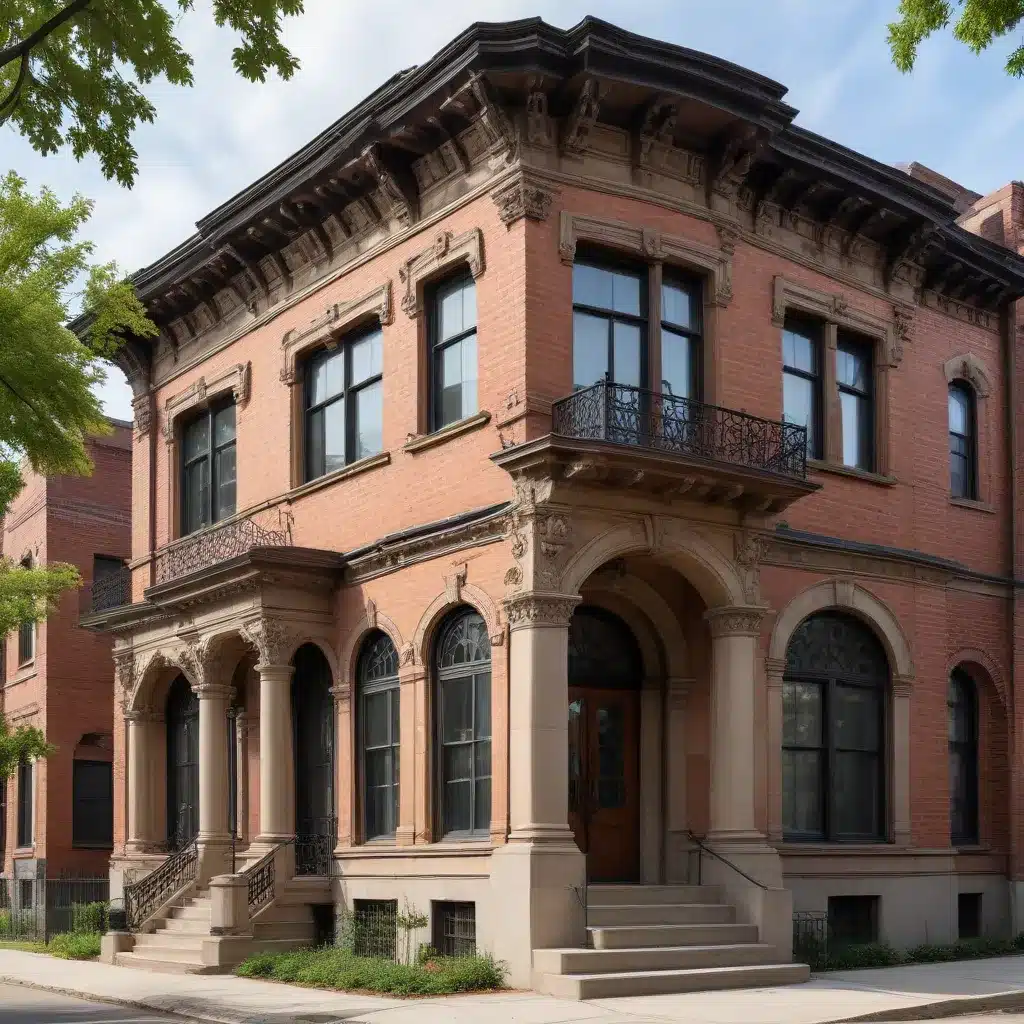
Uncovering the Architectural Treasures in Your Community
As a seasoned construction professional and interior designer, I’ve had the privilege of working on numerous historic renovation projects, each with its own unique charm and significance. Across cities and towns, there are architectural gems waiting to be discovered, restored, and preserved for future generations. In this comprehensive guide, I’ll share my insights on how you can identify, restore, and celebrate the historic buildings in your own neighborhood.
Recognizing the Hidden Gems
The first step in preserving your community’s architectural heritage is to uncover the hidden gems that may be overlooked or underappreciated. Start by taking a closer look at your surroundings – what older buildings or homes catch your eye? What structures seem to have a story waiting to be told?
Organizations like the Coronado Historical Association in California and the Preservation Dayton group in Ohio have made it their mission to identify and celebrate the historic wonders in their communities. By instituting recognition programs, such as the Coronado GEM Awards, they shine a spotlight on homeowners and businesses who have gone the extra mile to restore and preserve their architectural gems.
As you explore your neighborhood, keep an eye out for unique architectural styles, intricate details, and signs of craftsmanship that set certain buildings apart. These could include Mission Revival, Colonial Revival, or Craftsman bungalow designs – each with their own distinct features and historical significance.
Understanding the Value of Preservation
Preserving historic buildings is not just about maintaining the physical structures; it’s about safeguarding the cultural heritage and community identity that they represent. These architectural gems serve as tangible connections to the past, reminding us of the stories, values, and traditions that have shaped our local communities.
Take for example the Stockman House in Mason City, Iowa – a stunning example of Frank Lloyd Wright’s Prairie School style. When the house faced the threat of demolition to make way for a parking lot, the River City Society for Historic Preservation stepped in to save it. They worked tirelessly to relocate and restore the Stockman House, transforming it into a museum that now serves as a testament to the community’s architectural legacy and a source of pride for residents.
Similarly, the Elgin National Watch Historic District in Elgin, Illinois, showcases the importance of preserving industrial heritage. By recognizing and protecting the historic buildings that once housed the Elgin National Watch Company, the community has been able to celebrate its rich history as a center of manufacturing and innovation.
Restoring these architectural gems not only preserves the physical structures but also the stories and cultural identity they represent. It’s a way of honoring the past while shaping the future of your community.
Tackling the Restoration Process
Embarking on a historic renovation project can seem daunting, but with the right approach and a team of experienced professionals, you can breathe new life into these architectural treasures. Here are some key considerations to keep in mind:
Assemble the Right Team
Collaborate with local preservation experts, architects, and contractors who have a proven track record in historic renovations. These specialists can provide invaluable guidance on appropriate materials, construction techniques, and design approaches that respect the original character of the building.
Prioritize Preservation over Replacement
The guiding principle in historic restoration should be to preserve as much of the original fabric as possible. This may involve painstaking repairs, meticulous cleaning, and sensitive updates to ensure the building’s structural integrity and functionality, while maintaining its historic charm.
Embrace Sustainable Practices
Sustainability and historic preservation go hand in hand. Look for ways to incorporate energy-efficient upgrades, such as high-performance windows, insulation, and heating/cooling systems, without compromising the building’s historic integrity. Repurposing and recycling existing materials can also significantly reduce the environmental impact of your restoration project.
Engage the Community
Historic buildings are not just for their owners to enjoy – they belong to the entire community. Involve local residents in the restoration process, whether through volunteer opportunities, educational programs, or public events. This helps foster a sense of ownership and pride in the community’s architectural heritage.
Celebrate the Transformation
Upon completion of your restoration project, take the time to commemorate the achievement. Host a grand reopening celebration, install historical plaques, or organize walking tours to showcase the building’s renewed splendor. These efforts not only honor the hard work but also inspire others to undertake similar preservation initiatives in the neighborhood.
Preserving the Past, Shaping the Future
As a construction professional and interior designer, I’ve seen firsthand the transformative power of historic preservation. By restoring the architectural gems in our communities, we don’t just preserve the physical structures – we safeguard the rich tapestry of our shared history, identity, and cultural heritage.
Whether it’s a stately Victorian home, a beloved community theater, or an industrial landmark, each restored building serves as a living testament to the ingenuity, craftsmanship, and resilience of those who came before us. By championing these preservation efforts, we not only honor the past but also inspire future generations to cherish and protect the architectural wonders that make our neighborhoods truly special.
So, I encourage you to venture out and discover the hidden gems in your own community. Engage with local preservation groups, connect with experienced professionals, and take the first steps towards restoring these architectural treasures. By doing so, you’ll not only breathe new life into these historic structures but also contribute to the vibrant, unique character of your neighborhood – a legacy that will endure for generations to come.


